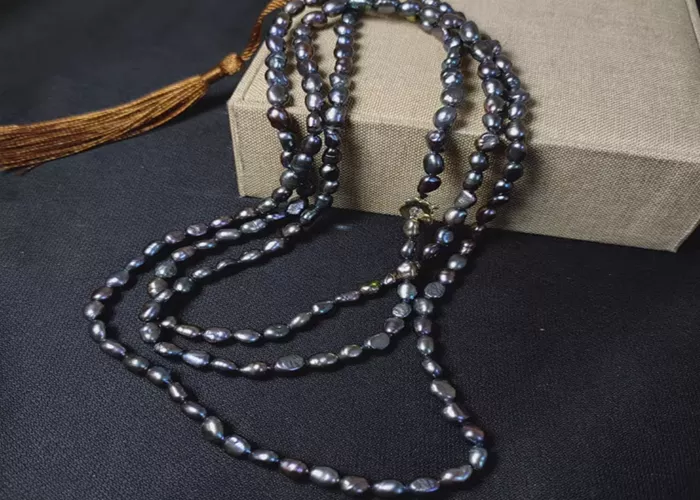Tourmaline is a beautiful and versatile gemstone used in jewelry worldwide. Known for its rich array of colors and appealing aesthetic, tourmaline is often used in rings, necklaces, earrings, and bracelets. However, one of the common questions people have when considering this gemstone for their jewelry pieces is: “Does tourmaline scratch easily?” In this article, we will explore the hardness, durability, and overall properties of tourmaline to help you understand how easily it can be scratched, its ideal care, and how it holds up in everyday wear.
Understanding Tourmaline: A Gemstone Overview
Before diving into whether tourmaline scratches easily, it’s important to understand the gemstone itself. Tourmaline is a group of silicate minerals that come in a variety of colors, making it a popular choice for various types of jewelry. It has a fascinating range of hues, from the deep greens and pinks to the rarer blues and yellows.
The tourmaline meaning goes beyond its aesthetic qualities; it is believed to hold metaphysical properties, such as healing and promoting emotional stability. Despite its wide appeal, the durability of tourmaline, particularly its susceptibility to scratches, is something every jewelry lover should understand.
Tourmaline Properties: How Hard Is It?
The hardness of a gemstone is a key factor in determining its susceptibility to scratches. Hardness refers to the mineral’s ability to resist abrasion. The Mohs scale of hardness is the standard used to measure this property, ranging from 1 (the softest, like talc) to 10 (the hardest, like diamond). Tourmaline scores between 7 and 7.5 on the Mohs scale, which places it in the category of medium-hard gemstones.
In comparison to other gemstones, tourmaline is fairly durable, but not as scratch-resistant as stones like sapphire (9 on the Mohs scale) or diamond (10). This means that while tourmaline is suitable for most types of jewelry, it can be scratched under certain conditions. The tourmaline properties vary depending on the specific type of tourmaline, but in general, this gemstone is more resistant to scratching than softer stones like opal or pearl.
Factors That Affect Tourmaline’s Scratch Resistance
Although tourmaline has a good hardness rating, several factors can affect its scratch resistance:
- Type of Tourmaline: Different varieties of tourmaline may have slightly different hardness values. For example, rubellite (a red-pink variety) and chrome tourmaline (a deep green) can exhibit slight variations in hardness.
- Cut and Shape: The way the tourmaline is cut can influence its durability. Faceted stones may be more vulnerable to scratches along certain edges, while cabochon cuts (those without sharp edges) may be less prone to damage.
- Environmental Factors: Tourmaline can be scratched by harder materials. Contact with materials like metal (especially with rough or worn surfaces), diamond, or even some types of sand can cause abrasion.
Tourmaline’s Durability in Everyday Wear
When considering tourmaline for everyday jewelry, it’s important to keep in mind that while it is not as scratch-resistant as some other gemstones, it is still durable enough for regular use. Many jewelers use tourmaline in rings, earrings, and necklaces, making it a popular choice for pieces that can be worn frequently.
For tourmaline rings, which are subject to frequent abrasion from contact with hard surfaces, extra care is necessary to maintain the stone’s appearance. Regular cleaning, avoiding contact with hard objects, and using protective settings (like bezels) can help reduce the risk of scratching.
How to Care for Tourmaline Jewelry
Proper care for tourmaline jewelry is essential to preserving its beauty and preventing scratches. Here are some tips:
- Avoid Hard Impacts: Always remove tourmaline jewelry before engaging in activities that may result in hard impacts, such as sports or heavy lifting.
- Store Separately: When not in use, store your tourmaline jewelry separately from other gemstones, especially harder stones like diamonds and sapphires, which can cause scratching.
- Clean Regularly: Clean your tourmaline jewelry gently with warm water and mild soap. Avoid harsh chemicals and ultrasonic cleaners, which can damage the gemstone.
Benefits and Metaphysical Properties of Tourmaline
In addition to its physical properties, tourmaline is often valued for its tourmaline benefits in the metaphysical realm. Many believe that tourmaline offers emotional support, promoting balance and stability. It is also thought to help reduce stress and anxiety, making it a popular choice for individuals seeking peace and clarity in their lives.
In various cultures, tourmaline has been associated with protection and good fortune. Wearing this gemstone is said to protect the wearer from negative energy, which adds to its appeal as a meaningful jewelry piece.
Common Uses of Tourmaline in Jewelry
Tourmaline is used in a wide range of jewelry pieces, from rings and earrings to necklaces and bracelets. Its vibrant color range makes it particularly popular in custom designs. It is also a favored gemstone in birthstone jewelry, as it represents the month of October.
Conclusion
Tourmaline is a medium-hard gemstone with a Mohs hardness of 7 to 7.5, meaning it is relatively durable but not as scratch-resistant as harder gemstones like sapphire or diamond. While it is suitable for use in most types of jewelry, it requires proper care to maintain its appearance and avoid scratches.
By understanding tourmaline properties and following proper care instructions, you can enjoy this beautiful gemstone in your jewelry collection for years to come. Whether you’re drawn to its stunning colors, its healing properties, or its significance in personal jewelry, tourmaline is a gemstone that combines both beauty and practicality.
Related topic:
- Discover the Origins of Green Tourmaline: Top Sources
- Does Pink Tourmaline Offer Protection? Unveiling Its Power
- Does Pink Tourmaline Fluoresce? A Deep Dive


